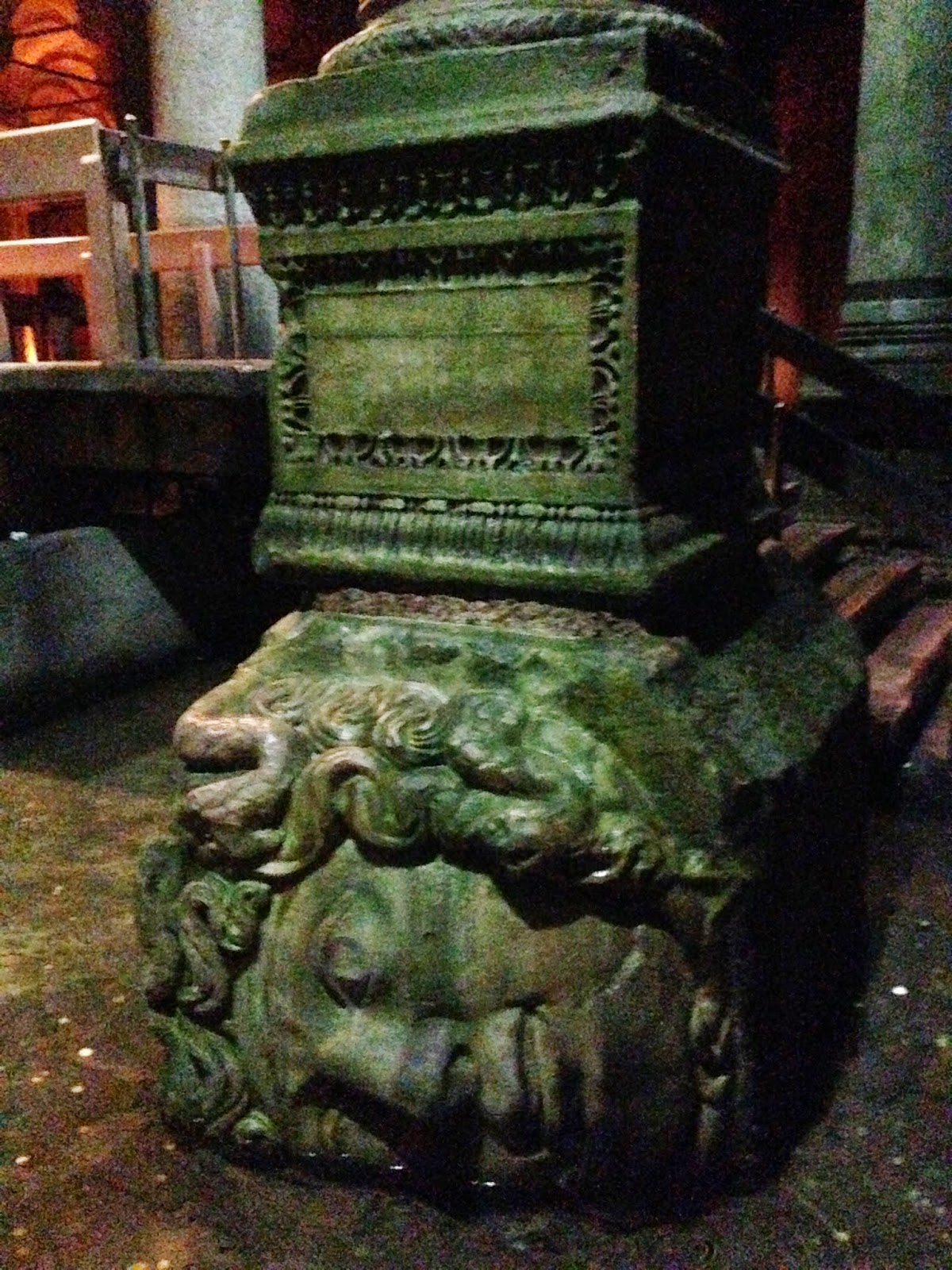 |
| Looking down a length of marble columns |
The cistern itself is one of hundred that lie beneath the city dates to the 6th Century (another really cool but now dry cistern has been re-purposed into the Sarnic Restaurant, which is well worth visiting while in Istanbul). Records claim that 7,000 slaves were used to construct the cistern under the site of what was originally a large public square. At over 100,000 square feet the cistern can hold 2,800,000 cubic feet of water which was piped into the cistern from a water distribution system twelve miles away. The cistern provided filtered water for the Topkapi Palace and the Great Palace of Constantinople from the mid 1400s up until modern times. Three hundred and thirty six marble columns set in twelve rows of twenty eight support the cistern's ceiling. Of particular interest are the columns whose bases are carved with the images of Medusa.
 |
| Medusa |
Even if you have never visited the cistern it may still look familiar to you thanks to the 1963 James Bond film From Russia With Love, 2009's The International or in Dan Brown's Inferno. But if possible, seeing it in person is a must, and as I said earlier, my favorite place in Istanbul.
Visitors enter the cistern through a modest brick building then wind their way down a narrow set of fifty-two stone steps before entering the dimly lit chamber. Although much of the cistern has been rebuilt or restored--most recently in the mid 1980s when silt was removed and wooden walkways replaced the boats that had moved visitors through the cistern-- its construction is testimony to the amazing engineering skills that date back to the Byzantine Empire. To think that all of this was created by hand (yes, the hands of slaves but by hand none the less) is truly awe inspiring. The cistern chamber itself is cool and damp with the audible sound of dripping water echoing through the space. I've visited on two occasions and both times, despite the crowds, noise levels are minimal with people whispering. Once your eyes adjust to the dim lighting you can wandering the length of the cistern along wooden planked walkways. Today the water is shallow and filled with an array of well fed fish. Somehow the fish only add to the serene and almost eerie feeling that permeates the area. The Medusa heads are located in the far corner of the cistern making trekking all the way to the end well worth the effort. They are just that cool.
But then again whole cistern is cool. So if you find yourself in Istanbul, go visit the cistern. You will be able to briefly escape the heat and discover a piece of what is going on under your feet. I promise that you won't be disappointed.

No comments:
Post a Comment